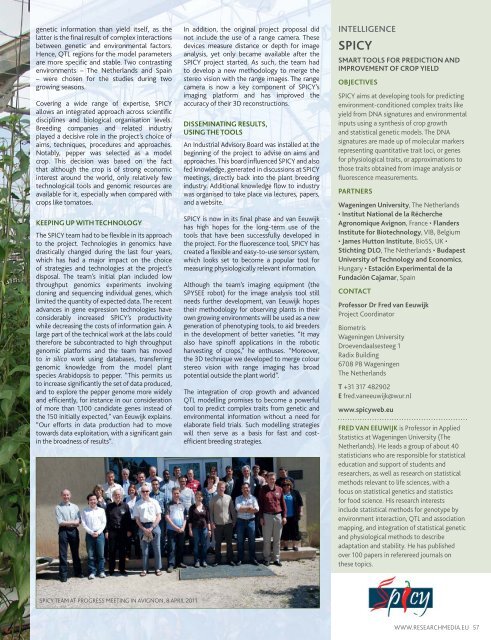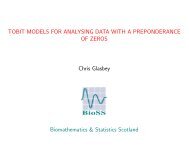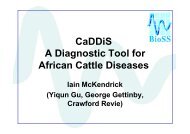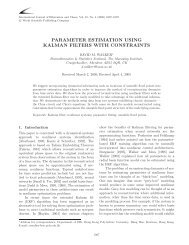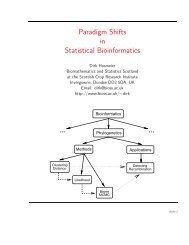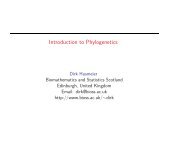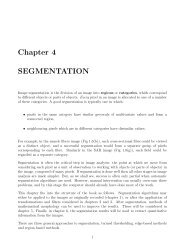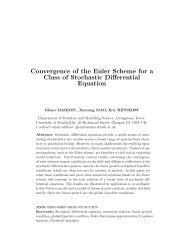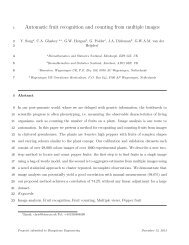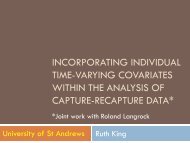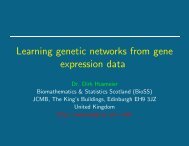Breeding for yield
Breeding for yield
Breeding for yield
- No tags were found...
Create successful ePaper yourself
Turn your PDF publications into a flip-book with our unique Google optimized e-Paper software.
genetic in<strong>for</strong>mation than <strong>yield</strong> itself, as thelatter is the final result of complex interactionsbetween genetic and environmental factors.Hence, QTL regions <strong>for</strong> the model parametersare more specific and stable. Two contrastingenvironments – The Netherlands and Spain– were chosen <strong>for</strong> the studies during twogrowing seasons.Covering a wide range of expertise, SPICYallows an integrated approach across scientificdisciplines and biological organisation levels.<strong>Breeding</strong> companies and related industryplayed a decisive role in the project’s choice ofaims, techniques, procedures and approaches.Notably, pepper was selected as a modelcrop. This decision was based on the factthat although the crop is of strong economicinterest around the world, only relatively fewtechnological tools and genomic resources areavailable <strong>for</strong> it, especially when compared withcrops like tomatoes.KEEPING UP WITH TECHNOLOGYThe SPICY team had to be flexible in its approachto the project. Technologies in genomics havedrastically changed during the last four years,which has had a major impact on the choiceof strategies and technologies at the project’sdisposal. The team’s initial plan included lowthroughput genomics experiments involvingcloning and sequencing individual genes, whichlimited the quantity of expected data. The recentadvances in gene expression technologies haveconsiderably increased SPICY’s productivitywhile decreasing the costs of in<strong>for</strong>mation gain. Alarge part of the technical work at the labs couldthere<strong>for</strong>e be subcontracted to high throughputgenomic plat<strong>for</strong>ms and the team has movedto in silico work using databases, transferringgenomic knowledge from the model plantspecies Arabidopsis to pepper. “This permits usto increase significantly the set of data produced,and to explore the pepper genome more widelyand efficiently, <strong>for</strong> instance in our considerationof more than 1,100 candidate genes instead ofthe 150 initially expected,” van Eeuwijk explains.“Our ef<strong>for</strong>ts in data production had to movetowards data exploitation, with a significant gainin the broadness of results”.In addition, the original project proposal didnot include the use of a range camera. Thesedevices measure distance or depth <strong>for</strong> imageanalysis, yet only became available after theSPICY project started. As such, the team hadto develop a new methodology to merge thestereo vision with the range images. The rangecamera is now a key component of SPICY’simaging plat<strong>for</strong>m and has improved theaccuracy of their 3D reconstructions.DISSEMINATING RESULTS,USING THE TOOLSAn Industrial Advisory Board was installed at thebeginning of the project to advise on aims andapproaches. This board influenced SPICY and alsofed knowledge, generated in discussions at SPICYmeetings, directly back into the plant breedingindustry. Additional knowledge flow to industrywas organised to take place via lectures, papers,and a website.SPICY is now in its final phase and van Eeuwijkhas high hopes <strong>for</strong> the long-term use of thetools that have been successfully developed inthe project. For the fluorescence tool, SPICY hascreated a flexible and easy-to-use sensor system,which looks set to become a popular tool <strong>for</strong>measuring physiologically relevant in<strong>for</strong>mation.Although the team’s imaging equipment (theSPYSEE robot) <strong>for</strong> the image analysis tool stillneeds further development, van Eeuwijk hopestheir methodology <strong>for</strong> observing plants in theirown growing environments will be used as a newgeneration of phenotyping tools, to aid breedersin the development of better varieties. “It mayalso have spinoff applications in the roboticharvesting of crops,” he enthuses. “Moreover,the 3D technique we developed to merge colourstereo vision with range imaging has broadpotential outside the plant world”.The integration of crop growth and advancedQTL modelling promises to become a powerfultool to predict complex traits from genetic andenvironmental in<strong>for</strong>mation without a need <strong>for</strong>elaborate field trials. Such modelling strategieswill then serve as a basis <strong>for</strong> fast and costefficientbreeding strategies.INTELLIGENCESPICYSMART TOOLS FOR PREDICTION ANDIMPROVEMENT OF CROP YIELDOBJECTIVESSPICY aims at developing tools <strong>for</strong> predictingenvironment-conditioned complex traits like<strong>yield</strong> from DNA signatures and environmentalinputs using a synthesis of crop growthand statistical genetic models. The DNAsignatures are made up of molecular markersrepresenting quantitative trait loci, or genes<strong>for</strong> physiological traits, or approximations tothose traits obtained from image analysis orfluorescence measurements.PARTNERSWageningen University, The Netherlands• Institut National de la RéchercheAgronomique Avignon, France • FlandersInstitute <strong>for</strong> Biotechnology, VIB, Belgium• James Hutton Institute, BioSS, UK •Stichting DLO, The Netherlands • BudapestUniversity of Technology and Economics,Hungary • Estación Experimental de laFundación Cajamar, SpainCONTACTProfessor Dr Fred van EeuwijkProject CoordinatorBiometrisWageningen UniversityDroevendaalsesteeg 1Radix Building6708 PB WageningenThe NetherlandsT +31 317 482902E fred.vaneeuwijk@wur.nlwww.spicyweb.euFRED VAN EEUWIJK is Professor in AppliedStatistics at Wageningen University (TheNetherlands). He leads a group of about 40statisticians who are responsible <strong>for</strong> statisticaleducation and support of students andresearchers, as well as research on statisticalmethods relevant to life sciences, with afocus on statistical genetics and statistics<strong>for</strong> food science. His research interestsinclude statistical methods <strong>for</strong> genotype byenvironment interaction, QTL and associationmapping, and integration of statistical geneticand physiological methods to describeadaptation and stability. He has publishedover 100 papers in referereed journals onthese topics.SPICY TEAM AT PROGRESS MEETING IN AVIGNON, 8 APRIL 2011WWW.RESEARCHMEDIA.EU 57


